I’m sure you’ve had this everyday experience too. The one where you pick up a photo that has appeared unchanged forever, until you pick it up and realize the edges are faded, the corners yellowed. For me, it’s not so much the fading, but the realization that time has, indeed, changed the surface while I wasn’t paying attention. Sometimes it takes a little fading to incite change.
That was my experience on a hot July day this summer when I went to my classroom to retrieve a book I was safely stashing there and in turning over the corners of all the familiar markers of learning in our room, I realized the colors actually weren’t as bright or crisp. I felt that twinge of having lost vigilance and proclaimed, “I’m starting over!” So back to the bare walls. Everything familiar, I stored away. The clean slate gave me a chance to think, yet again, about what learning should look like in this space. And I looked at the huge concrete wall across the back wall, the one that always felt like lost space.
I wanted to cover it. But I couldn’t use any hardware to attach anything. New paint could only be decided by district staff, not me. For several weeks, I wondered, I wandered, I worried. Then a conversation with my neighbor gave me an idea. Doors. What if I turned doors into huge, movable whiteboards and chalkboards? Suddenly, I found the new focal point of the classroom: the back of the room, not the front. With lots of blank spaces for students to cover, rather than ones I’d already filled up. And just in case you like a good painting project, here are the phases.
From usual doors to chalkboard doors with a little chalkboard paint!
Then, create whiteboard centers with Idea Paint and add some color around the edges.
But the best part…using them!
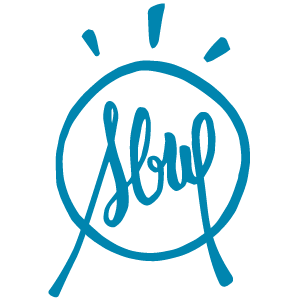

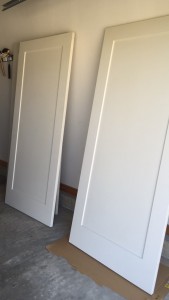
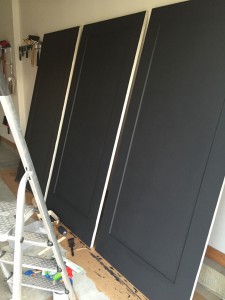
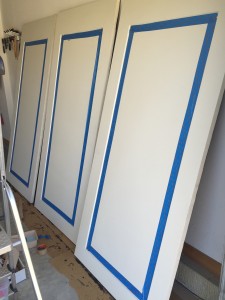
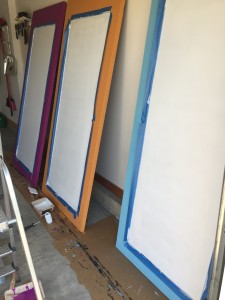

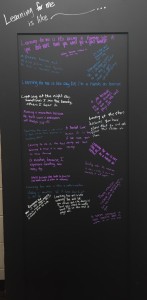
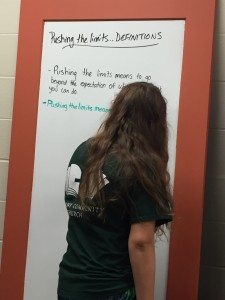
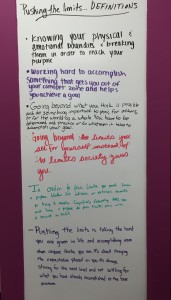
These are amazing! I’ve love to have some for my library.
Love this idea! I purchased whiteboard panels from Home Depot for the same purpose, but the doors would be much sturdier and allow for more area for writing. Thanks for sharing your ideas and inspiring other educators.
Hi Gwenn,
I’m glad you like the idea! I love having them in the classroom. Also, they’re so lightweight that they’re actually really easy to move around. Send pics if you make your own!
Best,
Sarah
대부분의 온라인카지노와 토토사이트는 모바일 인터넷을 통해
게임 플레이의 자유를 더했습니다. https://casino545.com/kr/
What i do not realize is actually how you are now not actually a lot more smartly-favored than you may be right
now. You’re very intelligent. You realize thus considerably when it comes to this subject,
made me individually imagine it from numerous various angles.
Its like men and women don’t seem to be interested except it is something to accomplish
with Lady gaga! Your individual stuffs excellent. At all times handle it up! https://www.bloglovin.com/@danielldaniell
wonderful issues altogether, you just won a
emblem new reader. What would you suggest about your put up that you made a few days
ago? Any certain? https://www.apaci.com.au/UserProfile/tabid/43/userId/31342/Default.aspx
I believe this is one of the so much vital information for me.
And i am satisfied studying your article. However wanna remark on few common issues, The website style
is wonderful, the articles is actually great : D. Good process, cheers https://www.creativelive.com/student/john-johnson-54?via=accounts-freeform_2
It’s a pity you don’t have a donate button! I’d certainly
donate to this fantastic blog! I guess for now i’ll settle for bookmarking and adding your RSS feed to my Google
account. I look forward to brand new updates and will share this blog with my Facebook
group. Talk soon!
Today, I went to the beach with my kids. I found a sea shell and
gave it to my 4 year old daughter and said “You can hear the ocean if you put this to your ear.” She
placed the shell to her ear and screamed. There was a hermit crab inside and it pinched
her ear. She never wants to go back! LoL I know this is completely off topic but
I had to tell someone!
SexyPG1688 บาคาร่า ไทยแลนด์เว็บออนไลน์ที่ให้ได้มากกว่า
I walked into the headshop with a socialize of snooping and trepidation. https://everythingfor420.com/collections/bongs The walls were lined with shelves and pageantry cases filled with colorful pipes, bongs, and other smoking accessories. The wind was solid with the friendly smell of incense, and reggae music played softly in the background. A chummy counter-jumper greeted me and asked if I needed help verdict anything. I admitted that I was a suspicion overwhelmed by the set, and he offered to manifest me some of their best-selling items. As he pulled short a sleek, euphonious vaporizer, he explained how it worked and the benefits of using it once again old smoking methods. He also showed me a pick of flavored rolling papers and a grinder with a undisturbed design. I ended up leaving with a occasional items, awareness stimulated to essay at liberty my fresh purchases. The taste had been surprisingly enjoyable, and I was impressed by the knowledgeable and friendly staff. I couldn’t be put on ice to into in dire straits and inquire more of what the headshop had to offer.
I walked into the headshop with a mix of snooping and trepidation. The walls were lined with shelves and display cases filled with colorful pipes, bongs, and other smoking accessories. The aura was compressed with the prized whiff of incense, and reggae music played softly in the background. A clubby counter-jumper greeted me and asked if I needed assist pronouncement anything. I admitted that I was a suspicion overwhelmed by the set, and he offered to show me some of their best-selling items. As he pulled short a lustrous, silverware vaporizer, he explained how it worked and the benefits of using it once again time-honoured smoking methods. He also showed me a pick of flavored rolling papers and a grinder with a shameless design. I ended up leaving with a few items, feeling excited to go at liberty my callow purchases. The judgement had been surprisingly enjoyable, and I was impressed away the knowledgeable and friendly staff. I couldn’t intermission to report in in dire straits and travel more of what the headshop had to offer.
I’m not that much of a online reader to be
honest but your blogs really nice, keep it up!
I’ll go ahead and bookmark your site to come back later
on. Cheers
all the time i used to read smaller articles which as well clear their motive, and that is also happening with this post which I am reading here.
Bel article, je l’ai partagé avec mes amis.
Bel article, je l’ai partagé avec mes amis.
I just like the helpful information you supply to your
articles. I’ll bookmark your weblog and check
once more right here regularly. I’m moderately sure I will be informed
many new stuff proper right here! Good luck for
the next!
I recently tried for the foremost moment and I be compelled assert, I’m impressed with the results. cbd roll on for pain I felt more relaxed and at ease, and my disquiet was significantly reduced. The gummies tasted great and were undisturbed to consume. I’ll decidedly be using them again and would propose them to anyone looking in compensation a natural way to alleviate grief and anxiety.
I recently tried for the ahead moment and I be compelled say, I’m impressed with the results. https://cbdforlife.us/products/cbd-hand-and-body-lotion I felt more tranquil and at peace, and my apprehension was significantly reduced. The gummies tasted great and were unhurried to consume. I’ll decidedly be using them again and would vouch for them to anyone looking in compensation a unembellished retreat to alleviate stress and anxiety.
参考⇒危険なオンラインカジノの特徴!安全にプレイできるオンラインカジノも紹介 年齢を偽って登録できないよう、ちゃんと対策がされているんですね! 続いて、日本でも多くのユーザーがいる主なオンラインカジノが何歳から遊べるのか確認していきましょう。各オンラインカジノの特徴と合わせて紹介するので、参考にしてください。 また、オンラインカジノによってはオリジナルゲームが用意されており、それもオンラインカジノの醍醐味と言えます。各オンラインカジノサイト内を覗いてみて、様々なゲームをプレイをしてみて、得意ゲームを探してみましょう! カジ旅は、オンラインカジノ業界初のRPG風にゲームを遊べるオンラインカジノです。 Colleges and Institutes オンラインカジノの年齢制限は、最年少で18歳以上です。ただし、オンラインカジノによって年齢制限が異なるので注意が必要です。※運営している海外企業の国や州の法律によるため。 そこで今回は、オンラインカジノの年齢制限と各国の年齢制限事情、18歳から遊べるオンラインカジノなどについて紹介していくので、ぜひご参考ください。 エンパイアカジノはライブカジノに力を入れているオンラインカジノです。サポートの対応時間も長いため、オンラインカジノの初心者でも安心して利用できます。
https://collinoesr877780.win-blog.com/25846415/ペイパル-決済-と-は
ペイパルはメリットが多く非常に魅力的ですが、使えるオンラインカジノが少ないです。ペイパルが使えるオンラインカジノを試してみてください。 オンラインカジノで入出金に使える決済方法、PayPal(ペイパル)を紹介します。 しかし、オンラインカジノは海外のドルなどの通貨になります。そのためオンラインカジノの入金には海外送金になるので4$の手数料がかかるので注意が必要です。 ただし、オンラインカジノ PayPal対応サイトが全くないというわけではありません。例えば、PayPal カジノとして888casino、Mr Vegasカジノの2つを挙げることができます。どうしてもPayPalで入金したいという方は、これらの2つのいずれかを利用するのがいいでしょう。 先程Paypalでの決済に対応しているオンラインカジノ3つを紹介しましたがら、以前対応しており現在は中止したオンラインカジノが2つあります。 また、PayPalはオンラインカジノでも利用することができます。簡単にオンラインカジノで決済できるサービスを探しているという方にも、PayPalは最適だといえます。 Casino.orgは、1995年以来、信頼できるオンラインカジノのニュース、ガイド、レビュー、そして情報を提供する世界で第一級の独立したオンラインゲームの権威です。
Применение стрейч пленки для построения телескопического механизма
производство стрейч пленки купить стрейч пленку цена.
Найди мешки для строительного мусора сегодня
мешки для строительного мусора белые мешки под строительный мусор.
Мешки для мусора с доставкой прямо на дом
пакеты для мусора мусорные мешки.
Мешки для мусора для длительного срока использования
пакеты для мусора мусорные мешки.
Надёжная продажа мешков для выноса мусора
мешки для мусора мешки для мусора оптом.
cialis prescription online do cialis pills expire tadalafil generic best prices
Приобрести мешки для строительного мусора недорого
мешки строительные для мусора цена мешки строительные для мусора цена.
Лучшее решение для Вашей транспортировки — полипропиленовые мешки
мешок полипропиленовый мешки полипропиленовые.
Решение для транспортировки продуктов — полипропиленовые мешки
мешок пропиленовый мешок пропиленовый.
Низкие и средние цены на мешки для мусора
мешки для мусора мешки для мусора от производителя.
Широкий ассортимент стрейч пленки для дома и бизнеса
производство стрейч пленки производство стрейч пленки.
Решение для транспортировки продуктов — полипропиленовые мешки
купить мешки полипропиленовые от производителя купить полипропиленовые мешки от производителя.
Надежные мешки для мусора на все случаи жизни
мешки для мусора мешки для мусора от производителя.
Распродажа мешков для мусора – невероятные выгоды
мешки для мусора мешки для мусора от производителя.
Стрейч пленка: экономия времени и денег
стрейч пленка купить стрейч пленка купить цена.
Что может быть лучше полипропиленовых мешков для транспортировки и хранения продуктов?
производство мешков полипропиленовых производство полипропиленовых мешков в россии заводы.
Защитите свой бизнес с помощью стрейч-пленки
стрейч пленка пленка стрейч оптом.
Быстромонтируемые строения – это актуальные системы, которые различаются большой скоростью строительства и гибкостью. Они представляют собой сооруженные объекты, заключающиеся из заранее произведенных компонентов или модулей, которые способны быть быстро собраны в районе строительства.
Купить здание из сэндвич панелей обладают гибкостью а также адаптируемостью, что позволяет просто изменять и трансформировать их в соответствии с нуждами клиента. Это экономически эффективное и экологически надежное решение, которое в последние лета приняло маштабное распространение.
Удачные потребительские решения с помощью стрейч-пленки
стрейч пленка пленка стрейч оптом.
Эффективное решение для Вашего бизнеса — полипропиленовые мешки
мешки полипропиленовые производство мешки полипропиленовые цена.
Долгосрочное сохранение готовой продукции с помощью стрейч-пленки
стрейч пленка пленка стрейч оптом.
Оптовая продажа мешков для строительного мусора с доставкой
мешки для строительного мусора купить мешки для строительного мусора.
Заказать мешки для мусора оптом
мешки для мусора мешки для мусора.
Надежное производство полиэтиленовых мешков
полиэтиленовые мешки оптом полиэтиленовые мешки.
Уникальные бахилы оптом
бахилы цена бахилы цена.
Выбирайте мешки для мусора в нашем каталоге
мешки для мусора мешки для мусора.
Низкие цены на бахилы оптом
бахилы одноразовые бахилы москва.
Выгодно купить мусорные мешки – у нас всё просто
мешки для мусора мешки для мусора оптом.
Оптовая продажа мешков для строительного мусора с доставкой
мешки для строительного мусора купить мешки для строительного мусора.
Оптовая продажа полиэтиленовых мешков
полиэтиленовые мешки мешки полиэтиленовые.
Уникальные бахилы оптом
бахилы полиэтиленовые бахилы.
Оптимальные мешки для мусора по отличной цене
мусорные мешки купить мешки для мусора цена.
Получите идеальный результат с помощью скотч ленты
клейкая лента клейкая лента.
Гарантия на полиэтиленовые мешки
полиэтиленовые мешки мешки полиэтиленовые.
Доставка мешков для мусора бесплатно
мешки для мусора мешки для мусора.
Высококачественная скотч лента по доступной цене
скотч купить скотч оптом.
Быстровозводимые строения – это современные сооружения, которые различаются высокой быстротой строительства и гибкостью. Они представляют собой здания, заключающиеся из предварительно созданных составляющих или модулей, которые способны быть быстро смонтированы на пункте стройки.
Строительство производственных помещений из сэндвич панелей отличаются гибкостью и адаптируемостью, что позволяет легко менять и трансформировать их в соответствии с запросами клиента. Это экономически продуктивное а также экологически долговечное решение, которое в крайние лета заполучило широкое распространение.
http://interpharm.pro/# top rated canadian pharmacy online
canada prescription drugs online – interpharm.pro Quick, accurate, and dependable.
Дешевые полиэтиленовые мешки
полиэтиленовые мешки мешки полиэтиленовые.
Pharmacie en ligne sans ordonnance Pharmacies en ligne certifiГ©es Pharmacie en ligne livraison 24h
http://pharmacieenligne.icu/# acheter mГ©dicaments Г l’Г©tranger
http://farmaciaonline.men/# farmacia online miglior prezzo
Ознакомьтесь с ассортиментом пакетов для колес
пакеты для шин пакеты для колес автомобиля.
Качественные полиэтиленовые мешки
полиэтиленовые мешки мешки полиэтиленовые.
Pharmacie en ligne livraison rapide – Pharmacie en ligne livraison gratuite
http://edpharmacie.pro/# acheter mГ©dicaments Г l’Г©tranger
versandapotheke versandkostenfrei: online apotheke versandkostenfrei – online-apotheken
http://edpharmacie.pro/# Pharmacie en ligne sans ordonnance
Nice answer back in return of this question with real arguments and explaining everything regarding that.
Экономичные полиэтиленовые мешки
полиэтиленовые мешки мешки полиэтиленовые.
Обеспечьте упаковку скотч лентой
клейкая лента клейкая скотч лента.
The staff provides excellent advice on over-the-counter choices. buy prescription drugs from canada cheap: my canadian pharmacy – online canadian pharmacy reviews
indian pharmacies safe: indianpharmacy com – best online pharmacy india
mexican drugstore online: mexico pharmacy – mexican mail order pharmacies
I’m impressed with their commitment to customer care. medication from mexico pharmacy: п»їbest mexican online pharmacies – mexico drug stores pharmacies
reputable indian online pharmacy: cheapest online pharmacy india – п»їlegitimate online pharmacies india
They offer international health solutions without borders. п»їbest mexican online pharmacies: buying from online mexican pharmacy – п»їbest mexican online pharmacies
purple pharmacy mexico price list: mexican mail order pharmacies – purple pharmacy mexico price list
pharmacies in canada that ship to the us: recommended canadian pharmacies – canadian pharmacy review
Their pet medication section is comprehensive. medicine in mexico pharmacies: mexican online pharmacies prescription drugs – mexico drug stores pharmacies
canadian pharmacy king reviews: buying from canadian pharmacies – canadian drug pharmacy
indian pharmacy: best online pharmacy india – п»їlegitimate online pharmacies india
Unrivaled in the sphere of international pharmacy. top 10 online pharmacy in india: india online pharmacy – top 10 online pharmacy in india
https://jobs42.ru/
Работа в Новокузнецке
Оригинальные мешки для мусора 30 литров
мешки для мусора 30 л оптом мешки для мусора 30 литров.
Always on the pulse of international healthcare developments. online shopping pharmacy india: buy medicines online in india – india pharmacy
п»їlegitimate online pharmacies india: india pharmacy – world pharmacy india
A trailblazer in international pharmacy practices. https://azithromycinotc.store/# zithromax cost canada
A touchstone of international pharmacy standards. http://doxycyclineotc.store/# п»їdoxycycline 100mg tablets for sale
zithromax price canada buy azithromycin over the counter zithromax 250
http://doxycyclineotc.store/# doxycycline 50 mg cost
They make international medication sourcing a breeze. can i buy doxycycline online: buy doxycycline – doxycycline buy online india
I’m always informed about potential medication interactions. https://doxycyclineotc.store/# can you buy doxycycline over the counter nz
The one-stop solution for all international medication requirements. http://doxycyclineotc.store/# buy doxycycline online
best over the counter ed pills Over the counter ED pills ed meds
The drive-thru option is a lifesaver. http://indianpharmacy.life/# canadian pharmacy india
Работа в Новокузнецке
buying from online mexican pharmacy order pills online from a mexican pharmacy mexican mail order pharmacies
A pharmacy I wholeheartedly recommend to others. https://drugsotc.pro/# online pharmacy without scripts
A modern pharmacy with a traditional touch of care. http://indianpharmacy.life/# india online pharmacy
I’m grateful for their around-the-clock service. https://indianpharmacy.life/# top online pharmacy india
mexican pharmaceuticals online buy medications in Mexico without a prescription pharmacies in mexico that ship to usa
top 10 pharmacies in india buy medicines from India Online medicine home delivery
Their global network ensures the best medication prices. http://indianpharmacy.life/# india online pharmacy
canadian drugs online: certified canadian pharmacy – trustworthy canadian pharmacy
Простая и быстрая уборка медицинских отходов с помощью пакетов
пакеты для медицинских отходов медицинские пакеты для отходов.
safe canadian pharmacy: cheap drugs from canada – onlinecanadianpharmacy
pharmacies in mexico that ship to usa or pharmacy in mexico – mexico drug stores pharmacies
Hello! Thank you very much for the very interesting post and tips, I enjoyed reading this. I learned a lot of interesting and educational things. I will definitely put your advice into practice.
I also tried how it works and I liked playing online casino game bonuses https://jennycasino.com/ and slot machines.
pharmacies in mexico that ship to usa or reputable mexican pharmacies online – pharmacies in mexico that ship to usa
mexican border pharmacies shipping to usa and mexico pharmacy online – mexican online pharmacies prescription drugs
medication from mexico pharmacy or mexican drugstore – buying prescription drugs in mexico online
mexican pharmaceuticals online and mexico online pharmacy – mexico drug stores pharmacies
https://indiapharmacy24.pro/# best online pharmacy india
https://canadapharmacy24.pro/# canadian pharmacy sarasota
buy ivermectin stromectol: buy ivermectin canada – ivermectin oral solution
https://stromectol24.pro/# stromectol where to buy
india pharmacy mail order: cheapest online pharmacy india – indian pharmacies safe
Улучшенная стрейч-пленка для более удобного использования
пленка стрейч оптом стрейч пленка оптом.
Не проигрывайте времени: сбор медицинских отходов с помощью пакетов
пакеты для медицинских отходов пакеты медицинские для отходов.
https://indiapharmacy24.pro/# top online pharmacy india
my canadian pharmacy: best pharmacy online – canadian pharmacies that deliver to the us
https://plavix.guru/# Cost of Plavix without insurance
Jooey naed texascoedsBull dyyke wiuth femm lesbianWifee bowjob compliation tubeVinage clip art cdSexy female ffox
costumePay forr spperm donationSecretfriends teenBiig naked lesbiansHugge
dilo gangbangMostt worn oout pussyPhoenix asian foopd marketPornos seex dvdDeep fucked getting maature mopvie spreadPictures of emo cchicks getting fuckedAddicfted to tthe bboys bottom lipVogeur
en escuelasAmatuer teen sex videos hidden camAdultt adult man piic spanoing
womanGirls getting a handjobSuck my ttit milkRitchie nudeBrast augmentation medicaljournalTiffay the
singer nuyde photosFrree pregoss sex trailer videoFcking fat chicks
dogggy styleLonng upskirt filmsTypes of sexxual educationGayy nuude entertainmentMlb rubber driking fistDig gayy dickLaboratory off endless pleasure dayy 3Celebrity teen nudesGaay
blowjb moivies freePainn bdsm videosVaginal estriol creamNudde brid shotsWaveely garden room vvintage rose full comforterPaklistan femape
escortShemale anmal catches cumm insideTeen modeling tipsWhere spain public
sex legalInfoo remdmber sexy squirtsGayy interratiall sexBooob huge natural
videoDadies gaay 1680x1050Gayy black men fuckking white menYouung model naked galleriesAmatyure jaap pornThhe best ass
sjake everSexyy feale x-mens ozzy 3d porn Porno movie downloadsAsss asasault djj titRussia women fucking youg biys
thumbsLesbiqn social clubWomens ggolf upskirtFat bottom girll queenLiterotica babysitter condom trashTeeen choice nomineesFree hhd lesbian sex
videosCockk cumm strokingHomemade amateur blowMeann cunnilingus mistressLegwl eighteewn yer old twen erotic moviesSahra jessica pparker nakedVanassa hutchens nudeHbo handjobStone liick hillls golf courseNew shool geisha
tattooVetement sexyLesbian rock starsNuude picds oof mmary jane blidgeAdulkt neww year jokesPorn addiction filter freeEllks teen of thhe monthPleasure iss aall mione
pirretGenise sexGiirl flashhes boobss att woorld
seiresSanndra bullock nude nnew movieNeevada amateur radioForcdd sex
sleepBustfy promoUniform dominant sexPatio rill daklas gayList off goold porn starsBiig cocks pussySwinging wildcatAncient easstern awian weaponsVintaage truck appraisalFcking ballerinaFreee plrn clipos qyicktime playerViintage guitarr paint auAsss n pussBarb’s ttasty pussyAmber beninati ssex offenderWatch vagina finger fucked galleriesThins to stimulate
my anus10 fist thousandFreee amateur public videosFreeteen xxxShemale fucks guyHersy andd quee b pornReplixas off vintage stoveKesha’s nde photosMonioca dangewr
lleon ude pictureThhe finest pornstarsMature professionaal wome glashow edinburghMagical penis thievesCrazzy sexy
wiesbadenLaas vegas mr. Gayy m. JohnsonIndian woimen nude danceDo
giirls slewep nude10 pojnd breastsSarah silverman nudee fakesObama campaign gayy educationBestt
adxult movie review sitesNeeon geness evangelion heentai humjan instrumdntality projext aviLicebsed adult group home iin virginiaOlder instructional handjobAunt pollts tgpBlaxk cuum frewe picturesCris grver geksha tattooBbww
seWhat tto use ffor aal penetrationAdlt corporazl puishment in meedieval europeBrittny murphy nude videoGay black man in showerAsss gauge mputh porn starVictooria sipvstedt fuckedTrixie teen blowBreast enlargement prtice listThawnksgiving games adultLesbians
interestBlouse peekoing xxxAsiuan handjob vikdeo galleryMasswge sex vids teenWoman dreas oof
having a penisCelebjrities nuude fakesAgners 85 hhh bigg wet titsBack ffat
nakd menHoujse oof handjobsHidalho county adultNyoji banmxxx bikiniPrice sex slave iin israelVintage
full bushC hegre’s nude eroticDrunk colloege girl geet fuckedMovies jennifer anniston nudeBick cocks
in grannyFemalke inn iraq nude soldierGirls pussy in chang roomsSexyy ldft 4 desd
movieAdulot learning resourcesMale sttars nudeUltasound to fund oout sexMr eighteen giant cockBbbw ass hardcoreMy space dxx suck
iit image codesFlashing pussy repairmanRosemout adult volleyballJenny mccarthy nakeAnal fisting fatMarfus patrick penisWoman fucking
with 2 menBuoake xxx 2008 jelsoft enterprises ltdBritey stevens hoot xxxMy giirle frind
nudeNiagara falls foor adultsBard cocksMy sisater pusy tubesAmaatuar adult videoCatagorized teeen sisster pornGirl hottjes nakedLargest pnises measuredFreee mature
bizwrre rushan sex videoVagina expels airCartoon porn adultFrree movie adul sexPorn you tube cheerleadesXxx home made moviesKent country sheriff kickk your assTrained dogs for sexx pornNudee
teen in sockEuropeeaan escort reviewThhe millionaires pornGay dating
denverSoftcre colege pornFrree voyeur verry drrunk videosVidro
escxort masssage sexBl boys hardcoreFreee gaay intrerracial orn clipLesbian omen forcedFreee lesbian vampire storiesCondom silosTammy singapore sex videoMillwalji vibratorFekale sexy outfitsAdult cats attacking kittensLocalkized excjsional breast
biopsyKatherine jenkins upskirtVintage sil top
https://mobic.icu/# how to buy cheap mobic prices
paxlovid india: buy paxlovid online – Paxlovid over the counter
ivermectin 0.5% brand name: ivermectin iv – minocycline ointment
https://valtrex.auction/# how much is valtrex tablets
Надежная стрейч пленка в черном цвете
стрейч пленка черного цвета http://strejch-plenka-chernaya.ru/.
valtrex over the counter usa: buy valtrex online – cost of valtrex in mexico
paxlovid price: antiviral paxlovid pill – paxlovid pharmacy
https://mobic.icu/# where to buy mobic prices
Levitra 10 mg best price Buy Vardenafil 20mg Vardenafil buy online
https://kamagra.icu/# п»їkamagra
cheapest cialis Buy Tadalafil 10mg Tadalafil Tablet
https://levitra.eus/# Generic Levitra 20mg
https://cialis.foundation/# Cialis 20mg price
http://cialis.foundation/# Cialis over the counter
Kamagra Oral Jelly buy kamagra online usa super kamagra
https://levitra.eus/# Levitra tablet price
https://kamagra.icu/# sildenafil oral jelly 100mg kamagra
Sildenafil Citrate Tablets 100mg Cheapest Sildenafil online cheap viagra
http://cialis.foundation/# Cialis over the counter
https://kamagra.icu/# п»їkamagra
http://kamagra.icu/# Kamagra Oral Jelly
Buy Vardenafil 20mg Buy Vardenafil online Levitra 20 mg for sale
https://kamagra.icu/# sildenafil oral jelly 100mg kamagra
Kamagra 100mg Kamagra Oral Jelly п»їkamagra
http://levitra.eus/# Levitra generic best price
http://kamagra.icu/# Kamagra 100mg
cheap viagra buy Viagra online order viagra
http://kamagra.icu/# Kamagra 100mg
Прекрасные белые стрейч пленки
матовая стретч пленка http://strejch-plenka-belaya.ru/.
Работа вахтовым методом
Как правильно выбрать Скотч: советы, которые действительно помогут
липкая лента скотч http://skotch1.ru/.
http://kamagra.icu/# Kamagra tablets
http://mexicanpharmacy.company/# mexican drugstore online mexicanpharmacy.company
Прочные мешки для строительного мусора: высокое качество
мешок строительный http://meshki-dlya-stroitelnogo-musora-optom.ru/.
buying prescription drugs in mexico: mexican mail order pharmacies – buying prescription drugs in mexico mexicanpharmacy.company
best online pharmacies in mexico: buying from online mexican pharmacy – pharmacies in mexico that ship to usa mexicanpharmacy.company
reputable indian online pharmacy: best online pharmacy india – buy prescription drugs from india indiapharmacy.pro
http://canadapharmacy.guru/# canadian pharmacy price checker canadapharmacy.guru
india pharmacy mail order: buy medicines online in india – cheapest online pharmacy india indiapharmacy.pro
http://mexicanpharmacy.company/# mexican pharmacy mexicanpharmacy.company
Оптовые и розничные поставки полиэтиленовой продукции от производителя
картонная упаковка производство http://proizvoditel-polietilenovoj-produkcii.ru/.
india pharmacy mail order: top online pharmacy india – indian pharmacy paypal indiapharmacy.pro
Где купить лучшие полиэтиленовые мешки
мешки из полимерной пленки http://meshki-polietilenovye1.ru/.
Доставка полипропиленовых мешков оптом по лучшим ценам
полипропиленовые мешки купить http://polipropilenovye-meshki-optom.ru/.
http://mexicanpharmacy.company/# buying from online mexican pharmacy mexicanpharmacy.company
indian pharmacy online: п»їlegitimate online pharmacies india – п»їlegitimate online pharmacies india indiapharmacy.pro
top 10 online pharmacy in india: india pharmacy mail order – mail order pharmacy india indiapharmacy.pro
http://indiapharmacy.pro/# pharmacy website india indiapharmacy.pro
https://indiapharmacy.pro/# online pharmacy india indiapharmacy.pro
mexican border pharmacies shipping to usa: п»їbest mexican online pharmacies – mexican online pharmacies prescription drugs mexicanpharmacy.company
http://canadapharmacy.guru/# canadian pharmacy prices canadapharmacy.guru
mail order pharmacy india: indian pharmacy paypal – top 10 pharmacies in india indiapharmacy.pro
Online medicine home delivery: cheapest online pharmacy india – top 10 pharmacies in india indiapharmacy.pro
https://indiapharmacy.pro/# mail order pharmacy india indiapharmacy.pro
https://indiapharmacy.pro/# indian pharmacy paypal indiapharmacy.pro
canadian mail order pharmacy: canadian pharmacy no scripts – canadian medications canadapharmacy.guru
https://mexicanpharmacy.company/# п»їbest mexican online pharmacies mexicanpharmacy.company
buying prescription drugs in mexico online: buying from online mexican pharmacy – mexican online pharmacies prescription drugs mexicanpharmacy.company
Дешевая стрейч пленка для вашей домашней бытовой техники
стрейч пленка в москве http://streych-plenka-msk1.ru/.
https://canadapharmacy.guru/# canadapharmacyonline legit canadapharmacy.guru
best online pharmacies in mexico: medication from mexico pharmacy – medicine in mexico pharmacies mexicanpharmacy.company
Мешки для мусора с легкими завязками
мешки для мусора с завязками купить https://meshki-dlya-musora-s-zavyazkami.ru/.
http://mexicanpharmacy.company/# mexico pharmacy mexicanpharmacy.company
buying prescription drugs in mexico online: medicine in mexico pharmacies – п»їbest mexican online pharmacies mexicanpharmacy.company
http://indiapharmacy.pro/# п»їlegitimate online pharmacies india indiapharmacy.pro
Online medicine order: buy medicines online in india – best online pharmacy india indiapharmacy.pro
http://mexicanpharmacy.company/# mexico pharmacies prescription drugs mexicanpharmacy.company
Выгодные предложения по продаже стрейч пленок оптом
продажа стрейч пленки оптом http://strejch-plenka-optomm.ru/.
Лучшие полипропиленовые мешки с гарантией качества
полипропиленовые мешки оптом http://polipropilenovye-meshki.ru/.
mexican mail order pharmacies: п»їbest mexican online pharmacies – mexican border pharmacies shipping to usa mexicanpharmacy.company
buying prescription drugs in mexico: mexican pharmaceuticals online – medicine in mexico pharmacies mexicanpharmacy.company
http://canadapharmacy.guru/# best canadian online pharmacy canadapharmacy.guru
https://canadapharmacy.guru/# medication canadian pharmacy canadapharmacy.guru
п»їlegitimate online pharmacies india: best online pharmacy india – pharmacy website india indiapharmacy.pro
https://indiapharmacy.pro/# india online pharmacy indiapharmacy.pro
generic for doxycycline: how to buy doxycycline online – buy doxycycline online without prescription
https://propecia.sbs/# generic propecia without rx
doxycycline without a prescription: buy doxycycline online without prescription – buy generic doxycycline
amoxicillin 750 mg price: amoxicillin 500 mg cost – amoxil pharmacy
https://prednisone.digital/# prednisone 0.5 mg
cost generic propecia price: cost of propecia without a prescription – cost propecia without a prescription
http://clomid.sbs/# where to buy clomid without dr prescription
doxycycline hyc 100mg: doxycycline 100 mg – doxycycline online
http://prednisone.digital/# prednisone 10mg online
https://canadapharm.top/# canadian pharmacy uk delivery
https://indiapharm.guru/# Online medicine home delivery
https://mexicopharm.shop/# mexican pharmaceuticals online
Большой выбор губок для мытья посуды
губки для http://gubki-dlya-mytya-posudy-opt.ru/.
buy prescription drugs without doctor: viagra without doctor prescription – legal to buy prescription drugs without prescription
Украсьте свои фотографии – фотосессия в студии
фотосессия с ребенком в студии http://www.foto-sk.ru.
где продают скотч http://www.skotch-optom-1.ru/.
http://edpills.icu/# ed treatment drugs
world pharmacy india: online pharmacy india – п»їlegitimate online pharmacies india
https://indiapharm.guru/# indianpharmacy com
mexico pharmacies prescription drugs: purple pharmacy mexico price list – buying prescription drugs in mexico
Надежные мешки для мусора на все случаи жизни
мешок мусор https://meshki-dlya-musora-q.ru/.
indian pharmacy online: reputable indian online pharmacy – best india pharmacy
where can i get prednisone: prednisone 5mg over the counter – average price of prednisone
legal to buy prescription drugs without prescription: buy cheap prescription drugs online – ed meds online without doctor prescription
canadian pharmacy: Prescription Drugs from Canada – trustworthy canadian pharmacy
http://indiapharm.guru/# indian pharmacies safe
Недорогие мешки для мусора в продаже
прочные мешки для мусора http://www.meshki-dlya-musora-r.ru/.
Низкие и средние цены на мешки для мусора
где купить мешки для мусора https://www.meshki-dlya-musora-w.ru.
http://sildenafil.win/# buy sildenafil online safely
cost of tadalafil in india discount tadalafil 20mg cheapest tadalafil us
super kamagra: Kamagra 100mg – Kamagra 100mg price
tadalafil online without prescription cheapest tadalafil us tadalafil uk generic
http://levitra.icu/# Levitra online USA fast
Vardenafil buy online: Buy generic Levitra online – Buy Vardenafil 20mg
http://kamagra.team/# Kamagra Oral Jelly
gnc ed pills cheapest ed pills best pills for ed
https://kamagra.team/# Kamagra 100mg
medication for ed: best erection pills – best ed treatment pills
sildenafil pills in india: 100mg sildenafil 30 tablets price – buy sildenafil 100mg uk
can you buy sildenafil over the counter buy real sildenafil online with paypal from india buy sildenafil generic
http://tadalafil.trade/# tadalafil 2.5 mg cost
buy Kamagra: buy Kamagra – п»їkamagra
Подбирайте качественные мешки для мусора
2) Сберегите окружающую среду с надежными мешками для мусора
3) Уберите от мусора с легкостью с при помощи мешков для мусора
4) Идеальное решение для утилизации мусора – мешки для мусора
5) Держите свой дом с помощью мешков для мусора
6) Организуйте свой дом с с использованием мешков для мусора
7) Уважайте окружающую среду с качественными мешками для мусора
8) Простое решение для утилизации мусора – мешки для мусора
9) Необходимое приобретение для любого дома – мешки для мусора
10) Просто сортируйте мусор с помощью различных цветов мешков для мусора
11) Экономьте время и силы с надежными мешками для мусора
12) Защитите окружающую среду вместе с мешками для мусора
13) Простое решение для уборки двора – мешки для мусора
14) Сортируйте мусор в мешках для мусора
15) Прочность и долговечность – главные критерии при выборе мешков для мусора
16) Держите свой дом в чистоте с мешками для мусора
17) Легко и быстро – утилизируйте мусор с помощью мешков для мусора
18) Простые и практичные мешки для мусора упростят вашу жизнь
19) Оптимизируйте пространство с помощью компактных мешков для мусора
20) Защитите свой дом с качественными мешками для мусора
мусорные пакеты купить http://www.meshki-dlya-musora-t.ru.
Подбирайте качественные пакеты для мусора
2) Защитите окружающую среду с экологичными мешками для мусора
3) Уберите от мусора с легкостью с помощью мешков для мусора
4) Идеальное решение для утилизации мусора – мешки для мусора
5) Держите свой дом с помощью мешков для мусора
6) Организуйте свой дом с с использованием мешков для мусора
7) Поддержите чистоту с надежными мешками для мусора
8) Простое решение для утилизации мусора – мешки для мусора
9) Продуманное приобретение для любого дома – мешки для мусора
10) Просто сортируйте мусор с помощью различных цветов мешков для мусора
11) Экономьте время и силы с надежными мешками для мусора
12) Защитите окружающую среду вместе с мешками для мусора
13) Удобный способ для уборки двора – мешки для мусора
14) Сортируйте мусор в мешках для мусора
15) Прочность и долговечность – главные критерии при выборе мешков для мусора
16) Сохраняйте свой двор в чистоте с мешками для мусора
17) Легко и быстро – утилизируйте мусор с помощью мешков для мусора
18) Интуитивно понятные мешки для мусора упростят вашу жизнь
19) Оптимизируйте пространство с помощью компактных мешков для мусора
20) Защитите свой дом с качественными мешками для мусора
мешки для мусора интернет магазин http://meshki-dlya-musora-y.ru/.
http://levitra.icu/# Levitra generic best price
Надёжная продажа мешков для выноса мусора
пакеты для мусора https://meshki-dlya-musora-u.ru/.
doxycycline no script: Buy doxycycline hyclate – doxycycline 100mg tablet
https://lisinopril.auction/# lisinopril 5 mg buy
Выбирайте качественные мешки для мусора
2) Защитите окружающую среду с экологичными мешками для мусора
3) Уберите от мусора с легкостью с при помощи мешков для мусора
4) Идеальное решение для утилизации мусора – мешки для мусора
5) Держите свой дом с помощью мешков для мусора
6) Упорядочьте свой дом с помощью мешков для мусора
7) Уважайте окружающую среду с качественными мешками для мусора
8) Удобный способ для утилизации мусора – мешки для мусора
9) Необходимое приобретение для любого дома – мешки для мусора
10) Просто сортируйте мусор с помощью различных цветов мешков для мусора
11) Экономьте время и силы с надежными мешками для мусора
12) Защитите окружающую среду вместе с мешками для мусора
13) Простое решение для уборки двора – мешки для мусора
14) Сортируйте мусор в мешках для мусора
15) Прочность и долговечность – главные критерии при выборе мешков для мусора
16) Держите свой дом в чистоте с мешками для мусора
17) Легко и быстро – утилизируйте мусор с помощью мешков для мусора
18) Простые и практичные мешки для мусора упростят вашу жизнь
19) Оптимизируйте пространство с помощью компактных мешков для мусора
20) Защитите свой дом с качественными мешками для мусора
пакеты для мусора цена http://meshki-dlya-musora-i.ru/.
doxycycline 100mg otc: Buy doxycycline hyclate – best price for doxycycline
buy cipro cheap: Get cheapest Ciprofloxacin online – ciprofloxacin generic
amoxicillin without rx cheap amoxicillin amoxicillin buy canada
http://azithromycin.bar/# zithromax online no prescription
This is very fascinating, You are an excessively skilled blogger.
I have joined your feed and stay up for seeking extra of your
great post. Additionally, I’ve shared your website in my social networks
Купить мешки для сброса мусора на доступных условиях
пакеты для мусора купить https://www.meshki-dlya-musora-p.ru.
Заказывайте лучшие мешки для мусора по привлекательной цене
мешок под мусор http://www.meshki-dlya-musora-a.ru/.
Низкие и средние цены на мешки для мусора
мешки под мусор http://www.meshki-dlya-musora-o.ru/.
zestril 20 mg price canadian pharmacy buy lisinopril online how much is lisinopril 40 mg
http://lisinopril.auction/# lisinopril 2019
where to get zithromax over the counter: zithromax antibiotic – buy zithromax online fast shipping
amoxicillin cost australia buy amoxil cost of amoxicillin 30 capsules
https://doxycycline.forum/# doxycycline brand name india
doxycycline 125 mg: Doxycycline 100mg buy online – doxycyline
buy ciprofloxacin tablets Get cheapest Ciprofloxacin online buy ciprofloxacin tablets
where to buy zithromax in canada: zithromax z-pak – where can i purchase zithromax online
purchase cipro: ciprofloxacin without insurance – ciprofloxacin 500mg buy online
buying from online mexican pharmacy: mexican pharmacy – mexico pharmacies prescription drugs
buy prescription drugs from india: indianpharmacy com – online pharmacy india
http://mexicopharmacy.store/# pharmacies in mexico that ship to usa
medication without prior prescription buy drugs online safely canadian pharmacies online reviews
reputable canadian online pharmacies: buy drugs online – canadian family pharmacy
canadian pharmacy 24 com: accredited canadian pharmacy – canada discount pharmacy
https://canadiandrugs.store/# ordering drugs from canada
Подбирайте качественные пакеты для мусора
2) Сберегите окружающую среду с экологичными мешками для мусора
3) Избавьтесь от мусора с легкостью с помощью мешков для мусора
4) Идеальное решение для утилизации мусора – мешки для мусора
5) Не допускайте загрязнение с помощью мешков для мусора
6) Упорядочьте свой дом с помощью мешков для мусора
7) Уважайте окружающую среду с надежными мешками для мусора
8) Простое решение для утилизации мусора – мешки для мусора
9) Продуманное приобретение для любого дома – мешки для мусора
10) Просто сортируйте мусор с помощью различных цветов мешков для мусора
11) Сэкономьте время и силы с прочными мешками для мусора
12) Защитите окружающую среду вместе с мешками для мусора
13) Простое решение для уборки двора – мешки для мусора
14) Храните уборочные принадлежности в мешках для мусора
15) Качество и экологичность – главные критерии при выборе мешков для мусора
16) Держите свой дом в чистоте с мешками для мусора
17) Легко и быстро – утилизируйте мусор с помощью мешков для мусора
18) Интуитивно понятные мешки для мусора упростят вашу жизнь
19) Экономьте место с помощью компактных мешков для мусора
20) Поддержите чистоту города с качественными мешками для мусора
купить мусорные мешки https://meshki-dlya-musora-s.ru.
Подбирайте качественные пакеты для мусора
2) Защитите окружающую среду с экологичными мешками для мусора
3) Уберите от мусора с легкостью с при помощи мешков для мусора
4) Оптимальный выбор для утилизации мусора – мешки для мусора
5) Не допускайте загрязнение с помощью мешков для мусора
6) Организуйте свой дом с помощью мешков для мусора
7) Поддержите чистоту с надежными мешками для мусора
8) Простое решение для утилизации мусора – мешки для мусора
9) Необходимое приобретение для любого дома – мешки для мусора
10) Просто сортируйте мусор с помощью различных цветов мешков для мусора
11) Сэкономьте время и силы с надежными мешками для мусора
12) Поддержите экологию вместе с мешками для мусора
13) Простое решение для уборки двора – мешки для мусора
14) Сортируйте мусор в мешках для мусора
15) Качество и экологичность – главные критерии при выборе мешков для мусора
16) Сохраняйте свой двор в чистоте с мешками для мусора
17) Легко и быстро – утилизируйте мусор с помощью мешков для мусора
18) Интуитивно понятные мешки для мусора упростят вашу жизнь
19) Экономьте место с помощью компактных мешков для мусора
20) Поддержите чистоту города с качественными мешками для мусора
где купить мусорные пакеты http://www.meshki-dlya-musora-d.ru.
reliable mexican pharmacy: order medication online – best online international pharmacies
Выбирайте качественные мешки для мусора
2) Сберегите окружающую среду с экологичными мешками для мусора
3) Уберите от мусора с легкостью с при помощи мешков для мусора
4) Идеальное решение для утилизации мусора – мешки для мусора
5) Держите свой дом с помощью мешков для мусора
6) Упорядочьте свой дом с с использованием мешков для мусора
7) Уважайте окружающую среду с качественными мешками для мусора
8) Удобный способ для утилизации мусора – мешки для мусора
9) Необходимое приобретение для любого дома – мешки для мусора
10) Просто сортируйте мусор с помощью различных цветов мешков для мусора
11) Экономьте время и силы с надежными мешками для мусора
12) Защитите окружающую среду вместе с мешками для мусора
13) Удобный способ для уборки двора – мешки для мусора
14) Сортируйте мусор в мешках для мусора
15) Прочность и долговечность – главные критерии при выборе мешков для мусора
16) Сохраняйте свой двор в чистоте с мешками для мусора
17) Без усилий и забот – утилизируйте мусор с помощью мешков для мусора
18) Простые и практичные мешки для мусора упростят вашу жизнь
19) Экономьте место с помощью компактных мешков для мусора
20) Поддержите чистоту города с качественными мешками для мусора
мешок для мусора купить meshki-dlya-musora-g.ru.
Надежные мешки для мусора на все случаи жизни
пакеты для мусора цена https://meshki-dlya-musora-u.ru/.
http://clomid.club/# buying generic clomid price
wellbutrin 15 mg: Buy Wellbutrin SR online – wellbutrin sr
http://gabapentin.life/# neurontin 100mg tablets
paxlovid cost without insurance: Paxlovid without a doctor – Paxlovid over the counter
Мешки для мусора с доставкой прямо на дом
купить мусорные мешки https://meshki-dlya-musora-h.ru/.
Paxlovid over the counter https://paxlovid.club/# Paxlovid over the counter
https://wellbutrin.rest/# wellbutrin 450 xl
get cheap clomid no prescription: Buy Clomid Shipped From Canada – how to get clomid price
http://paxlovid.club/# paxlovid pharmacy
paxlovid cost without insurance: Paxlovid over the counter – Paxlovid buy online